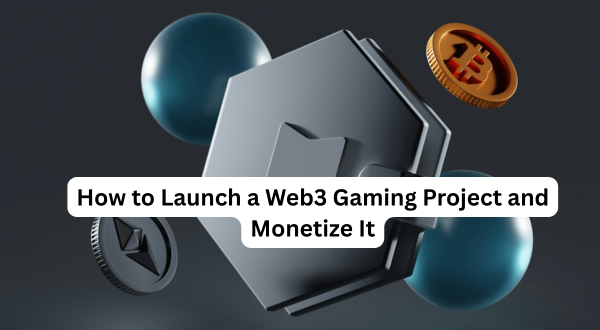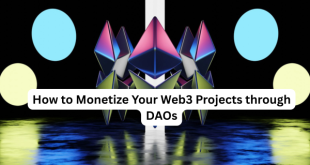Web3 is transforming the gaming industry by giving players real ownership, in-game economies, and the ability to earn while they play. If you’re a developer, entrepreneur, or gaming enthusiast, launching a Web3 gaming project can be both creatively fulfilling and financially rewarding. In this guide, we’ll walk you through how to build and monetize your own Web3 game.
🧠 What is Web3 Gaming?
Web3 gaming integrates blockchain technology into games, allowing assets like skins, weapons, characters, and even land to exist as NFTs (non-fungible tokens). It also uses cryptocurrencies to power play-to-earn (P2E) and decentralized economies.
Unlike traditional games, players in Web3 games can:
- Own in-game assets
- Trade or sell assets freely
- Earn crypto rewards
- Participate in governance (via DAOs)
Step 1: Define Your Game Concept
Start with a clear idea:
- Game Type: RPG, card game, strategy, metaverse, etc.
- Storyline and Mechanics: What makes your game fun and engaging?
- Web3 Layer: Will you include NFTs, tokens, DAOs, or all three?
📝 Example: A PvP fantasy game where players collect NFT characters and earn tokens by winning battles.
Step 2: Choose a Blockchain Platform
Pick a blockchain that fits your vision:
- Ethereum: Popular, but high gas fees.
- Polygon: Lower fees, Ethereum-compatible.
- Binance Smart Chain (BSC): Fast and affordable.
- Immutable X or Ronin: Tailored for gaming.
🛠 Tools to consider:
- Smart contract languages: Solidity or Rust
- Wallets: MetaMask, WalletConnect
- Marketplaces: OpenSea, Magic Eden, or in-game marketplaces
Step 3: Create In-Game Assets as NFTs
Turn game assets into NFTs so players can buy, sell, or trade them:
- Characters
- Weapons
- Skins
- Land
- Collectibles
Use standards like ERC-721 or ERC-1155 for compatibility.
🎨 Bonus Tip: Hire artists or use AI tools to design unique, high-quality assets.
Step 4: Build the Game Infrastructure
You’ll need:
- A front-end interface (Unity, Unreal, or Web-based)
- Smart contracts for in-game mechanics and token management
- Backend for off-chain logic and scalability
- Wallet integration for Web3 interaction
🔧 Platforms like Moralis, Thirdweb, and Alchemy can help speed up development.
Step 5: Launch a Utility or Governance Token
Create your own crypto token for:
- In-game purchases
- Player rewards
- Staking
- Governance (voting on game changes)
Make sure your tokenomics are well-structured:
- Total supply
- Allocation (team, treasury, rewards, liquidity)
- Vesting schedule
📈 Launch your token on DEXs like Uniswap or PancakeSwap.
Step 6: Create a Monetization Strategy
Here are a few proven ways to make money with your Web3 game:
1. NFT Sales
Sell characters, land, or special items at launch or through limited drops.
2. Marketplace Fees
Take a small percentage of peer-to-peer NFT trades in your ecosystem.
3. Token Utility
Encourage demand for your token by tying it to essential game mechanics (e.g., upgrades, entries, boosts).
4. Staking Pools
Offer staking options that reward players with tokens or NFTs, increasing engagement and liquidity.
5. Sponsorships and Ads
Partner with brands for in-game placement or promotional campaigns.
6. Tournaments and Events
Charge entry fees in your native token and offer rewards to winners.
Step 7: Build a Community
No Web3 game succeeds without a strong community. Use:
- Discord for player discussions and announcements
- Twitter/X for updates and viral marketing
- Telegram for direct engagement
- Medium/Substack for technical updates and blogs
🗳 Consider launching a DAO to let players vote on new features and token usage.
Step 8: Launch and Iterate
- Run alpha/beta versions to collect feedback.
- Use bug bounties and community grants to improve your project.
- Continuously add new content and reward loyal players.
🚀 Don’t forget to track metrics like active wallets, daily players, and transaction volume to measure success.
Final Thoughts
Web3 gaming opens up an exciting new world where developers and players can both benefit financially. By combining engaging gameplay with blockchain-based assets and economies, you can create an experience that’s not just fun, but rewarding.
If you’re serious about launching your Web3 game, start small, stay transparent, and focus on community. The money will follow.
 UBUCH ubuch | Honest Tech Reviews & Tutorials for Everyone
UBUCH ubuch | Honest Tech Reviews & Tutorials for Everyone




